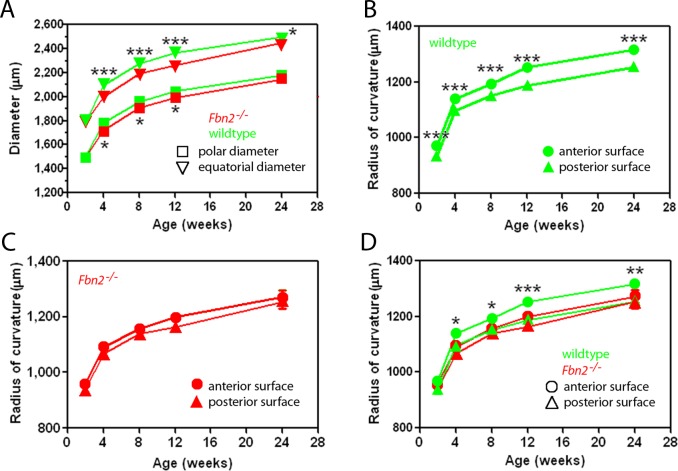Figure 8. .
A comparison of lens size and shape in WT and Fbn2−/− mice. The equatorial and polar dimensions of the lens are significantly reduced in comparison to age-matched Fbn2−/− animals (A). In WT mice, the radius of curvature of the anterior lens face is significantly greater than the posterior face (B). In contrast, in Fbn2−/− mice, the radii of the two faces are statistically indistinguishable at all ages (C). Comparative data are shown in (D), illustrating a significant decrease in the anterior radius of curvature of WT in comparison to age-matched Fbn2−/− lenses. Data represent mean ± SEM for n = 4 animals (eight eyes) of each genotype at each age. Error bars fall within the data symbols. *P < 0.05; **P < 0.01; ***P < 0.001.

